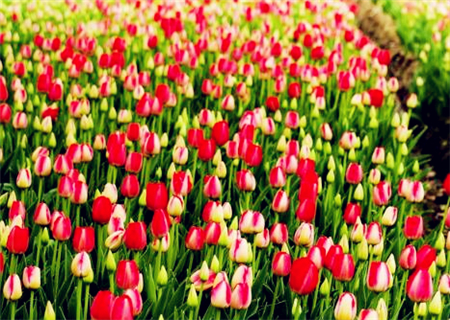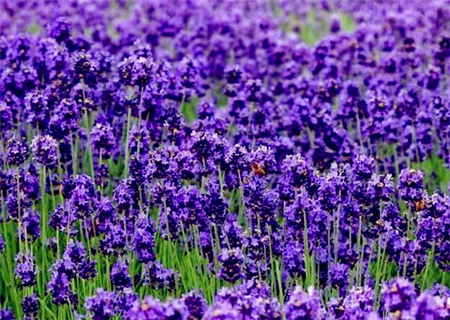How many years does Ruo bamboo bloom? How do you plant it? How much is the yield per mu? What are the prospects and benefits?
Ruo bamboo is distributed in West Tianmu Mountain, Zhejiang Province, Quxian County and Yangming Mountain in Lingling, Hunan Province. Born on a hillside by the side of the road. 300-1400 meters above sea level. It has the advantages of fast growth, large leaves, high yield, rich resources, wide use and artificial high-yield cultivation. So, how many years does Ruo bamboo bloom? How do you plant it? How much is the yield per mu? What are the prospects and benefits?

How many years does Ruo bamboo bloom?
Like other Gramineae plants, Ruo bamboo is also a perennial one-time flowering plant, its flowering also has a certain cycle. According to the old farmer, Ruo bamboo blossoms about every 100 years or so. Through the examination of the local chronicles of Zhejiang, we can see that Ruo bamboo in Zhejiang generally blossomed and bore fruit in the Hongyang year of the Taiping Heavenly Kingdom (1850-1862), and the masses adopted it to cross the famine, and the second time of general flowering and fruiting was in 1958, at an interval of about a hundred years. Therefore, the flowering cycle of Ruo bamboo is about 100a. Of course, how many years is the flowering cycle of Ruo bamboo? it needs to be examined and discussed from previous historical records.
How to grow Ruo bamboo?
1. Soil preparation: first of all, choose the place to plant Ruo bamboo. It is best to be in a place where the leeward is sunny, the light is sufficient, the soil is fertile and loose, the soil layer is deep sandy loam, and the drainage is good. Remove weeds, bricks, tiles and other rubbish from the surface and turn the ground to a depth of 50 cm.
two。 Hole digging: the length of bamboo whip is generally 40 to 50 cm. According to the length of bamboo whip, the hole is dug into a long strip, with a length of 60 cm, a width of 40 cm and a height of 40 cm. The topsoil and subsoil are placed separately.
3. Application of basic fertilizer: about 5 kg of organic fertilizer is applied to each tree hole, sprinkle a thin layer of organic fertilizer evenly at the bottom of the tree hole, then backfill the topsoil 10 cm, and mix the rest of the organic fertilizer with the remaining topsoil.
4. Planting time: the planting time of Ruo bamboo is generally chosen in winter and early spring, that is, between November and February.
5. Planting density: the planting density of Ruo bamboo is generally about 2500 plants per hectare, the plant row spacing is 2 meters × 2 meters, and the density of Magnolia officinalis with good site conditions is slightly sparse. In the case of mixed afforestation between Magnolia officinalis and Ruo bamboo, there are 167 to 222 clumps of Ruo bamboo per mu, with a row spacing of 2 m × 2 m or 2 m × 1.5 m.
6. Planting: treat the roots to promote the rapid formation of new roots, put the bamboo seedlings into the hole, put the whip roots smoothly in the soil, then fill the topsoil with organic fertilizer, and then fill the subsoil. Deep planting of bamboo is not easy to shoot, too shallow is easy to be blown down by the wind, when burying the soil to the original part of the bamboo seedling, step on all sides, pour the water, and cover a layer of fine soil under the water, which is about 3 cm higher than the original soil of the bamboo seedling, surrounded by the cofferdam. It is dry and windy in spring, in addition to watering enough water, foliar spraying should be carried out timely to prevent a large amount of water from evaporating and causing leaves to wither and fall off.
How much is the yield of Ruo bamboo per mu?
The yield per mu of Ruo bamboo is higher. Ruo bamboo has the characteristics of fast growth, large leaves and high yield. if the planting environment is suitable and the planting management is proper, the yield of bamboo leaves per mu of Ruo bamboo can reach 1.5 tons, and the yield of bamboo shoots per mu is about 1000 kg in the first year. After planting a few years, it can reach 5000-8000 kg.
What are the prospects and benefits of planting Ruo bamboo?
1. Food packaging
As the packaging of green and convenient food, bamboo leaves are favored by large and medium-sized cities all over the country. Beijing, Shanghai, Guangzhou and other places have bamboo leaves packaged food all the year round, and the market potential is huge. According to statistics, under normal circumstances, for every 10 million yuan in sales of zongzi, it basically needs 40 million bamboo leaves.
two。 Edible bamboo shoots
Phyllostachys pubescens shoot is not only high in crude fiber and rich in nutrition, but also has anti-cancer effect. The reason why people live long in the bamboo forest areas in the deep mountains has something to do with the frequent consumption of bamboo shoots.
3. Landscaping
Phyllostachys pubescens is an ideal ornamental and landscaping bamboo species with large leaves, short plants, evergreen and graceful posture. At the same time, Ruo bamboo and other shrub plants such as Phyllostachys pubescens, Phyllostachys pubescens, carnation and other shrub plants to build small diameter bamboo formation or as the dominant population to build a complete community system with vertical structure. In addition, Ruo bamboo is also suitable for family yard planting and potted plants.
4. Chopsticks
Hangzhou West Lake Tianzhu chopsticks are meticulously made of bamboo sticks unique to Tianzhushan area of the West Lake, elegant and practical.
5. Polysaccharides and polysaccharide drinks
There are a considerable amount of immunoreactive polysaccharides in the leaves of Phyllostachys pubescens. The polysaccharides composed of xylose, arabinose and galactose were obtained by refining the hot water extract of Ruo bamboo. After further fractionation, the polysaccharides of Ruo bamboo can be obtained. The tumor inhibition rate of Ruo bamboo polysaccharides to Smur180 was 99.6%, and the number of tumor elimination was 7 to 9. At the same time, Ruo bamboo can also be processed into bamboo leaf polysaccharide beverage, which contains physiologically active bamboo leaf polysaccharides, as well as amino acids, vitamins, trace elements, etc., with anti-fatigue, anti-aging effects.
6. Natural green additive
To wrap zongzi with bamboo leaves is to take advantage of its special bamboo smell. After boiling, distillation, extraction, drying and distillation, the leaves of Phyllostachys pubescens can get a yellowish volatile liquid with a strong aromatic smell. After processing, the additive as a natural green beverage can be produced.
7. Bamboo Wine
Bamboo leaves can be made into Ruo bamboo wine, and Ruo bamboo wine can be made by using bamboo leaves and other raw materials and comprehensive extraction technology. This unique forest beverage wine not only has a different flavor from other wines, but also contains a variety of amino acids, trace elements, vitamins and so on.
8. Health tea
Wash, dry or dry the young leaves of Ruo bamboo, put them in a cover cup, brew them with boiling water and add them for 15 minutes to drink. Generally, they can be brewed 3-5 times. Drink frequently, benefit lung and clear heat, anti-cancer and detoxification, especially suitable for middle-aged and elderly patients. In addition, using bamboo leaves to squeeze fresh juice directly instead of drinking tea also has a certain effect on the prevention and treatment of all kinds of cancer.
9. Traditional use
Traditionally, the bamboo leaves are also used to cover the boat, build a shed, weave a hat, weave a coir raincoat and so on, which has high utilization value.
Time: 2019-03-21 Click:
- Prev

When is the best time to plant tulips in Liliaceae? When does it usually blossom?
Tulip is a perennial herb of the genus Tulip in Liliaceae, with bulbs. Tulip is widely believed to be native to Turkey and is the national flower of Turkey, the Netherlands, Hungary and other countries. So when is the best time to plant tulips? When does it usually bloom?
- Next

When does lavender blossom? How many times a year? How long is the florescence? Where is it in our country? (with the best planting time)
Lavender is an important spice economic plant, the plant is evergreen and fragrant, the flowers are usually purple, blue, pink, white and other colors, with high ornamental value. So when does lavender blossom? How many times a year? How long is the florescence?
Related
- Fuxing push coffee new agricultural production and marketing class: lack of small-scale processing plants
- Jujube rice field leisure farm deep ploughing Yilan for five years to create a space for organic food and play
- Nongyu Farm-A trial of organic papaya for brave women with advanced technology
- Four points for attention in the prevention and control of diseases and insect pests of edible fungi
- How to add nutrient solution to Edible Fungi
- Is there any good way to control edible fungus mites?
- Open Inoculation Technology of Edible Fungi
- Is there any clever way to use fertilizer for edible fungus in winter?
- What agents are used to kill the pathogens of edible fungi in the mushroom shed?
- Rapid drying of Edible Fungi

